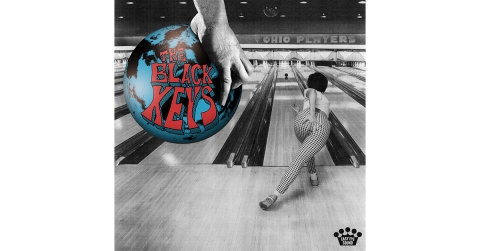Sam Gendel's new album, DRM, was released digitally on Nonesuch Records earlier this month, with the vinyl due April 16. Here, he talks with London-based journalist John Lewis about the album, on which he performs solo musical experiments with vintage instruments, accompanied by his voice. Find out why he tells Lewis: “A friend said it was like Kanye West meets The Triplets of Belleville.”
Sam Gendel's new album, DRM, was released digitally on Nonesuch Records earlier this month, with the vinyl due April 16. Here, he talks with London-based journalist John Lewis about the album, on which he performs solo musical experiments with vintage instruments, accompanied by his voice. Find out why he tells Lewis: “A friend said it was like Kanye West meets The Triplets of Belleville."
---
It was only a six months ago that Sam Gendel released his debut for Nonesuch Records, Satin Doll, an album on which he reinterpreted beloved jazz standards and created original material all drenched in a woozy, electronic sound bath. Now the follow-up album, DRM, seems to be doing something that’s almost the reverse. DRM recreates a sound akin to contemporary R&B using vintage synths and acoustic instruments. It is futuristic electronica made using antiques; space-age soul music created on wobbly guitars, and 1970s drum machines: a post-apocalyptic blip-hop reconstructed by the last man on earth using whatever wreckage he could find.
DRM features just one cover version: Lil Nas X’s “Old Town Road” is transformed into a delicate, aqueous instrumental, with Gendel playing the melody on an old German analogue synthesizer, using a pitch wheel to bend notes as he would on the saxophone. On other tracks he taps into the experimental spirit of latter-day R&B using a forty-year-old Electro Harmonix DRM32 drum machine, two antique synthesizers, and a sixty-year-old nylon-string guitar—all the time singing or chanting rhythmically, sometimes interpreting barely audible lyrics written by his friend Scott.
Gendel has no idea how to classify this album. “A friend said it was like Kanye West meets The Triplets of Belleville,” he chuckles. “I like that. But the entire thing is quite surreal. I’m imagining people listening to it and thinking, ‘What the hell is this?’ like they’d just encountered some sailing ship in the sky. I imagine it as if someone many years into the future listened to the popular music of today and then tried to recreate it, without any of the tools or the understanding. Stylistically, it’s not too far from so much contemporary pop-rap music that you hear on the radio. A lot of those electronic backgrounds and instrumentals you hear today are tending towards something really out-there and experimental. It’s rhythmic and pointillistic, collaging different, seemingly unfitting elements together in cool ways. Contemporary pop rap is a very open-minded music. It’s not trying to hold itself to some existing genre, it goes wherever the music wants to go. It’s undefined, which is quite liberating for a musician.”
Gendel is best known as a world-class saxophonist—it’s the instrument with which he’s led most of his bands, as well as the instrument on which he’s guested with the likes of Vampire Weekend, Ry Cooder, Moses Sumney, Sam Amidon, and Louis Cole’s Knower—but DRM is a sax-free zone. “There was no active effort on my part not to include it; it just wasn’t part of the equation when I started recording it,” he says. “I just found a formula, working around this DRM32 drum machine, and rolled with it. I don’t consider myself just a saxophonist, I’m just someone who works in music. And that can involve playing anything. Even when I’m playing in a band, as I was on Satin Doll, the instruments that the three of us played was almost irrelevant. It was more about the interaction between us, the ideas we generated, the shared sense of humor.”
On slow-motion ballads like “Times Like This” and “Wolves is Back” you can hear Gendel play bass lines and neo-soul progressions on his heavily detuned nylon-strung guitar, pitch-shifted through an octave pedal. “It’s tuned so low and falling apart—and playing so heavily behind the beat—that it sounds like it’s on its last breath,” he says. On “Oowee” that same wrecked instrument plays spacey jazz chords over a fidgety breakbeat. On “FFLLYYDADA” you can hear him chanting over wobbly chords played on a thirty-year-old Japanese keyboard called a Suzuki Waraku III. (“It’s this electronic koto that I picked up in a second-hand shop in Tokyo,” he says. “You hear it a lot on this album”). “WAA” features Gendel singing a haunting melody in a disjointed falsetto voice over a breakbeat that sounds like it’s been assembled by glitchy systems noises. The final track, “Walt’s”, takes a heart-wrenching Brazilian-style melody and sets it to waltz time, slowing down towards the song’s conclusion, as if every instrument has melted in the 120-degree heat of Death Valley.
Started not long after the release of Satin Doll—at a time when Gendel should have been promoting that album with an international tour, if the world hadn’t gone into lockdown—DRM was recorded in one, feverish sixteen-hour session. It was then manipulated by Gendel with the electronic percussionist from Satin Doll, Philippe Melanson, mixed by his friend and collaborator Blake Mills, and mastered by Grammy-nominated engineer Mike Bozzi.
All fourteen tracks are accompanied by a series of short films, directed by Marcella Cytrynowicz. “We recorded it all over California in July and August,” he says. “It actually took much longer to make the videos than it did to make the music.”
Perhaps inspired by enigmatic French filmmaker Jacques Tati, Gendel jerkily dances in longshot, wearing a pink turtleneck sweater and matching pants, or wearing a greenscreen chroma key jumpsuit, onto which Cytrynowicz projects special FX. On the slugging hip hop of “BBQ1” he’s walking around the abandoned, one hundred fifty-year-old Wild West ghost town of Bodie; on the Kanye West-ish “Super Woke Dada” he’s marching through sand dunes on a beach near San Francisco; on “WAA” he’s dancing with ducks in Mono Lake, an ancient saltwater basin 6,500 feet above sea level; on “Stoopid” he’s in the arid deserts of Death Valley, chomping on a banana.
“The visuals aren’t necessarily dictated by the music, but they both share the same slightly surreal feel, like I’m a video game character, inhabiting all these different backgrounds,” he says. “The vibe was that I look like the last person on Earth, interacting with this bleak Californian wilderness. As it happens, that’s kinda what the entire album suggests.”
—John Lewis
- Log in to post comments


